In today’s era of technological advancements, IoT devices have emerged as a game-changer, revolutionizing various industries, including the realm of smart buildings. These interconnected devices, equipped with sensors and advanced analytics capabilities, play a crucial role in transforming traditional buildings into intelligent, efficient, and sustainable spaces. This blog aims to delve into the world of IoT devices and their pivotal role in empowering smart and sustainable buildings.
Table of Contents
ToggleWhat are IoT devices?
IoT (Internet of Things) devices are physical objects embedded with sensors, software, and connectivity capabilities that enable them to collect and exchange data over the internet. These devices can range from everyday objects such as appliances, thermostats, and lighting systems to complex systems like industrial machinery and vehicles.
IoT devices are designed to interact with their environment, gather data, and communicate with other devices or systems, facilitating automation, monitoring, and control.
In the context of smart buildings, IoT devices play a crucial role in transforming traditional buildings into intelligent, connected spaces. Here are some key aspects of their contribution:
- Connectivity and Data Collection: IoT devices, such as sensors, actuators, and meters, provide connectivity to different systems and collect real-time data on various parameters within the building. This data includes occupancy levels, temperature, humidity, lighting usage, energy consumption, air quality, and more.
- Monitoring and Control: IoT devices enable continuous monitoring of building systems and environments. They can detect changes, anomalies, or inefficiencies and provide instant notifications to facility managers or building automation systems. These devices also allow remote control and automation of building systems, including HVAC (Heating, Ventilation, and Air Conditioning), lighting, refrigeration, etc.
- Predictive Maintenance: IoT devices enable predictive maintenance practices by continuously monitoring the health and performance of building equipment and systems. They can detect patterns, anomalies, or signs of equipment failure and generate alerts or work orders for maintenance personnel. By addressing issues proactively, building operators can minimize downtime, extend equipment lifespans, and optimize maintenance costs.
- Data Analytics and Insights: IoT devices generate vast amounts of data, which can be processed and analyzed to extract valuable insights. By leveraging advanced analytics techniques, building operators can identify patterns, trends, and inefficiencies, allowing them to make data-driven decisions for better resource allocation, optimization, and long-term planning.
IoT devices form the foundation of smart building management by providing connectivity, data collection, monitoring, control, and analytics capabilities. They enable energy efficiency, predictive maintenance, occupant comfort, security, and safety, ultimately leading to improved operational efficiency, sustainability, and cost savings for building owners and occupants.
Growing Adoption of IoT devices in smart buildings
The adoption of IoT devices in smart buildings is experiencing significant growth and is poised to revolutionize the way buildings are managed and operated. Here are some key factors highlighting the growing adoption of IoT devices in the context of smart buildings:
1. Increasing Connectivity
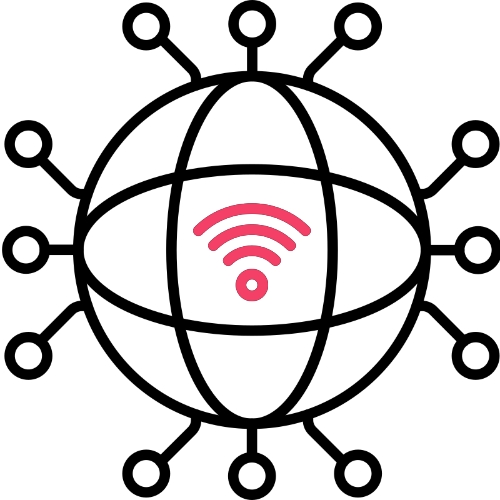
The proliferation of IoT devices is driven by advancements in connectivity technologies such as 5G, Wi-Fi 6, and LPWAN (Low-Power Wide-Area Network). These technologies provide robust and reliable connectivity, enabling seamless communication between devices within the building infrastructure.
2. Cost Reduction

The cost of IoT devices has significantly decreased over the years, making them more affordable and accessible to building owners and operators. This affordability has encouraged wider adoption of IoT devices in various aspects of smart building management.
3. Standardization and Interoperability
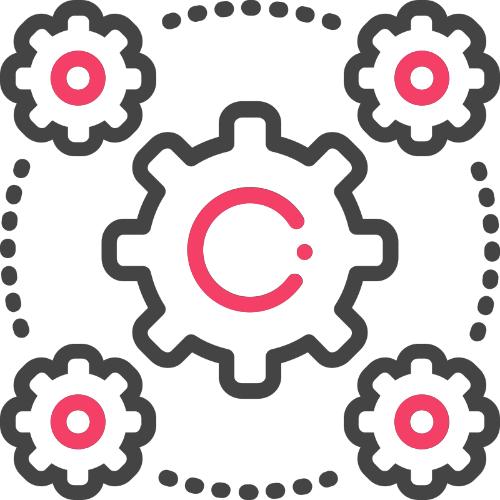
Industry organizations are working towards standardizing protocols and frameworks for IoT devices in smart buildings. Standards such as BACnet, Zigbee, and MQTT ensure interoperability between devices from different manufacturers, making it easier to integrate and manage diverse IoT devices within a building ecosystem.
4. Advancements in Sensor Technology

Sensors are the backbone of IoT devices, and their technology has advanced rapidly. Sensors have become more accurate, affordable, and energy-efficient, enabling precise and continuous monitoring of various parameters like temperature, humidity, occupancy, air quality, and energy consumption.
5. Cloud Computing and Big Data Analytics

The advent of cloud computing and powerful data analytics platforms has fueled the adoption of IoT devices. These technologies provide scalable storage and processing capabilities, enabling real-time analysis of vast amounts of data generated by IoT devices. Building operators can derive valuable insights and actionable information from this data, leading to more informed decision-making and efficient building management.
6. Regulatory and Environmental Factors
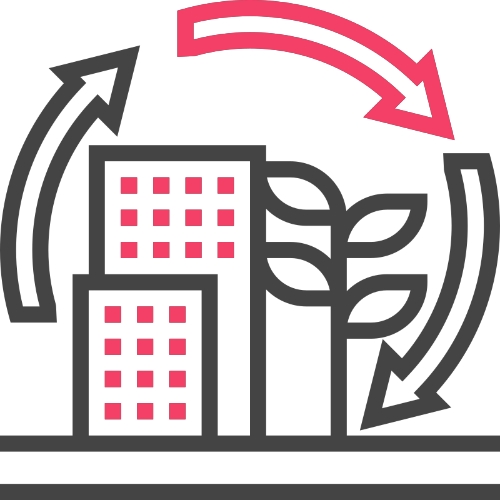
Government regulations and environmental concerns are pushing building owners to adopt sustainable practices. IoT devices enable better energy management, resource optimization, and sustainability in buildings, aligning with these regulatory requirements and environmental goals.
7. Remote Monitoring and Control
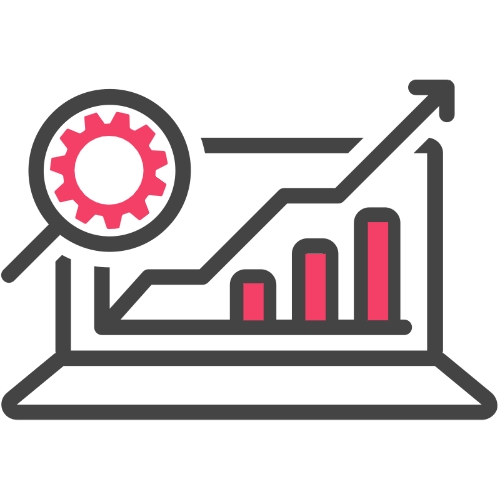
IoT devices enable remote monitoring and control of building systems, reducing the need for manual intervention. Facility managers can access real-time data and control building systems from anywhere, improving operational efficiency, reducing costs, and enabling faster response times to issues or emergencies.
The growing adoption of IoT devices in smart buildings is driven by technological advancements, cost reduction, standardization efforts, and the benefits they offer in terms of efficiency, sustainability, and occupant comfort. As the IoT ecosystem continues to evolve, we can expect even more innovative applications and increased integration of IoT devices in smart building management.
Understanding IoT-Powered Smart Buildings
IoT-powered smart buildings are equipped with a network of interconnected devices, sensors, and systems that collect, exchange, and analyze data to optimize the overall functioning and efficiency of the building. The Internet of Things (IoT) technology forms the backbone of these smart buildings, enabling seamless communication and control between various components.
In a smart building, numerous devices and systems are interconnected through a centralized network. Sensors embedded throughout the building monitor and collect data on various parameters such as occupancy, temperature, lighting, energy consumption, and environmental conditions. This data is then transmitted to a central control system, which uses advanced algorithms and artificial intelligence (AI) to make intelligent decisions and adjustments.
The benefits of IoT-powered smart buildings are numerous. They enhance energy efficiency by automatically adjusting lighting, heating, and cooling systems based on occupancy and environmental conditions, thus reducing waste and lowering utility costs. They improve occupant comfort and productivity by providing personalized environmental settings and intelligent automation. Additionally, smart buildings enable predictive maintenance by continuously monitoring and analyzing equipment performance, helping to prevent failures and reduce downtime.
Traditionally, building automation systems (BAS) were comprised of specialized hardware and software to control and monitor various building systems such as HVAC (Heating, Ventilation, and Air Conditioning), lighting, refrigeration, energy management, etc. With the advent of IoT, these systems have become more flexible, scalable, and interconnected.
IoT devices can be easily integrated with the existing BAS infrastructure. These devices collect data on parameters like temperature, humidity, AQI, light intensity, and energy consumption. The data is then transmitted to a cloud server where it’s analyzed and used to make informed decisions and trigger automated actions.
The integration of IoT devices in building automation systems offers several advantages. Firstly, it enables granular control and real-time monitoring of building systems. Facility managers can remotely access and control various parameters through web-based dashboards or mobile applications. This level of control allows for dynamic adjustments based on occupancy patterns, environmental conditions, and energy demand, leading to improved efficiency and comfort.
Advantages of IoT Devices in Smart Buildings
IoT devices offer numerous advantages when integrated into smart buildings. Some of the key benefits include:
1. Enhanced Energy Efficiency
IoT devices play a crucial role in optimizing energy consumption within smart buildings. Through real-time monitoring of ambient temperature, return water temperature, lighting conditions, etc.
IoT sensors can automatically adjust HVAC systems, lighting controls, and other energy-consuming devices to match actual needs. This dynamic and adaptive approach helps reduce energy waste, lower utility costs, and improve overall energy efficiency.
2. Improved Occupant Comfort & Productivity
IoT devices enable personalized and responsive environments that enhance occupant comfort and productivity. For instance, smart thermostats can adjust temperature settings based on individual preferences, occupancy, and outdoor weather conditions.
Lighting systems can be programmed to create optimal lighting conditions or adjust brightness levels based on occupancy and natural lighting. These personalized settings create a comfortable and productive environment for building occupants.
3. Predictive Maintenance and Reduced Downtime
IoT devices facilitate predictive maintenance in smart buildings. By continuously monitoring equipment performance and collecting data on factors like vibration, temperature, and energy consumption, IoT sensors can detect anomalies and patterns that indicate potential equipment failures.
This enables proactive maintenance scheduling, preventing unexpected breakdowns and reducing downtime. By addressing maintenance needs before they become critical, smart buildings can minimize disruptions and optimize the lifespan of building systems.
4. Data-Driven Decision Making
IoT devices generate a wealth of data on various aspects of building operations, including energy usage patterns, environmental conditions, occupancy levels, and equipment performance. This data can be analyzed using advanced analytics and AI techniques to extract valuable insights.
Facility managers and building administrators can leverage this information to make data-driven decisions, optimize resource allocation, identify areas for improvement, and implement more effective strategies for energy management, maintenance, and operational efficiency.
5. Scalability and Flexibility
IoT devices offer scalability and flexibility in smart buildings. As the needs and requirements of a building evolve over time, additional IoT devices can be easily integrated into the existing infrastructure without significant disruptions. This scalability allows for future expansion and adaptation of the building’s IoT ecosystem to accommodate new technologies and systems.
Overall, the integration of IoT devices in smart buildings brings numerous advantages, including energy efficiency, occupant comfort, predictive maintenance, safety, data-driven decision-making, and scalability. These benefits collectively contribute to more sustainable, intelligent, and user-friendly buildings.
IoT Devices in Smart Buildings
In a smart building, there are several key IoT devices that work together to create an interconnected and intelligent environment. These devices include:
1. Sensors
- Temperature Sensor: Monitors the temperature levels within the building to ensure optimal comfort and energy efficiency.
- CO2 Sensor: Measures the concentration of carbon dioxide in the air, helping to maintain good indoor air quality and regulate ventilation systems.
- AQI Sensor: Measures the Air Quality Index, which includes pollutants such as PM2.5, PM10, etc. It helps in monitoring and maintaining a healthy environment.
- Lux Sensor: Measures the ambient light levels in different areas of the building, enabling automated lighting control and energy optimization.
- Occupancy Sensor: Detects the presence or absence of people in specific areas of the building. This data can be used for various purposes, such as lighting control and space utilization optimization.
2. Actuators
Actuators and relays control various building assets & equipment based on automated instructions and/or scheduled based controls via gateway controller.
For instance, HVAC Actuators like VFDs & Valve cards, control heating, ventilation, and air conditioning systems based on temperature and occupancy data, ensuring optimal comfort and energy efficiency. Similarly, lighting actuators control the switching on/off, dimming, and color adjustment of lights based on occupancy, daylight levels, or user preferences.
3. Gateway Controller
The gateway acts as a bridge between the local IoT devices and the central management system. It collects data from sensors and sends it to the cloud or local server for processing and analysis. The gateway may also provide connectivity options such as Wi-Fi, Ethernet, or Zigbee to connect various IoT devices within the building.
4. User Dashboard
The user dashboard is a visual interface that allows building managers or administrators to monitor and control various aspects of the smart building. It provides real-time information on temperature, air quality, energy consumption, and other relevant data. Users can adjust settings, receive alerts or notifications, and analyze historical data through the dashboard.
These key IoT devices in smart buildings work in tandem to collect data, make informed decisions, and automate processes for enhanced comfort, energy efficiency, and overall building management.
Data Analytics and Insights
Data analytics plays a crucial role in maximizing the potential of IoT devices in several ways:
1. Real-Time Monitoring and Insights
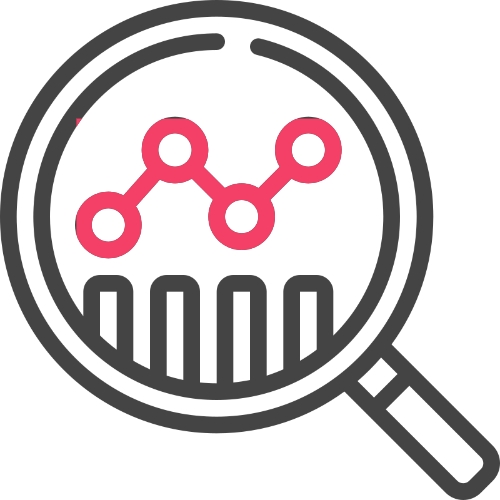
IoT devices generate vast amounts of data in real-time. Data analytics enables the collection, processing, and analysis of this data to provide real-time monitoring and insights. By leveraging analytics techniques such as stream processing, anomaly detection, and pattern recognition, organizations can gain valuable insights into the performance, status, and behavior of building assets & equipment.
2. Predictive Maintenance
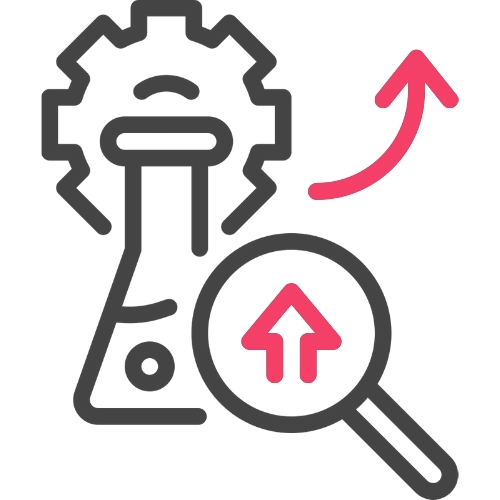
IoT devices, such as sensors and actuators, are often deployed in critical infrastructure or industrial settings. Data analytics can be used to predict equipment failures or maintenance requirements based on historical data and sensor readings. By analyzing patterns and anomalies in the data, organizations can identify potential issues and schedule proactive maintenance, minimizing downtime and optimizing maintenance costs.
3. Optimization and Efficiency
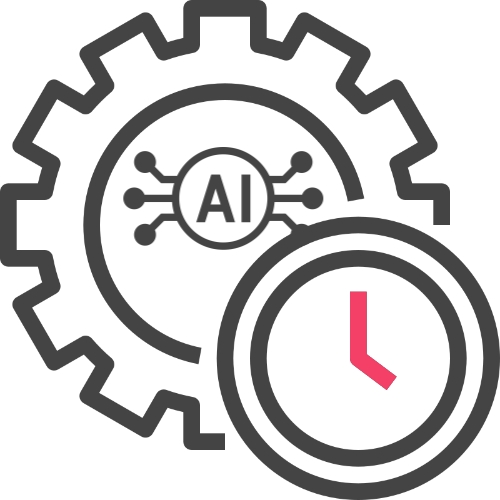
Data analytics enables organizations to optimize the performance and efficiency of building systems. By analyzing sensor data, energy consumption patterns, and environmental conditions, organizations can identify opportunities to optimize resource usage, improve energy efficiency, and reduce costs. For example, in a building, analytics can identify areas where energy is being wasted, enabling adjustments to HVAC systems or lighting controls for better energy management.
4. Data-Driven Decision Making
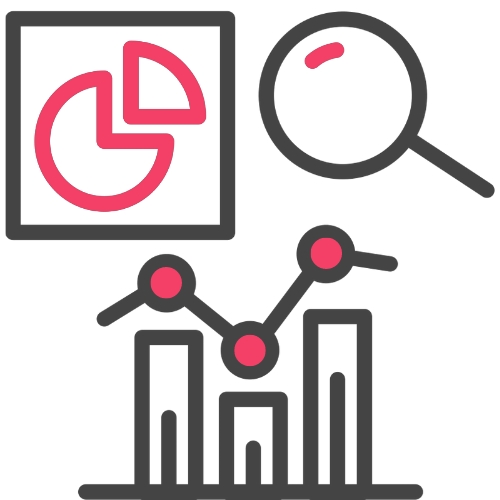
Data analytics allows organizations to make data-driven decisions based on insights derived from IoT device data. By analyzing historical data and real-time sensor data, organizations can identify trends, correlations, and patterns that can inform decision-making processes. This can include optimizing supply chain management, improving operational efficiency, and enhancing overall business performance.
Data analytics empowers organizations to extract meaningful insights from IoT device data, enabling them to make informed decisions, optimize operations, enhance user experiences, and improve overall efficiency and effectiveness in leveraging the potential of IoT devices.
Summing-up
IoT devices have emerged as powerful tools in empowering smart and sustainable buildings. These interconnected devices, sensors, and systems have revolutionized the way we interact with our built environments, making them more efficient, secure, and environmentally friendly.
By integrating IoT devices into buildings, we can achieve enhanced energy management, improved occupant comfort, and optimized operational efficiency. Through real-time data collection and analysis, these devices enable smart building automation systems to monitor and control various aspects such as lighting, temperature, ventilation, and security. This level of automation not only improves the comfort and well-being of occupants but also leads to significant energy savings and reduced carbon footprint.
Furthermore, IoT devices provide valuable insights into building performance and maintenance needs. By continuously monitoring and analyzing data, facility managers can proactively identify issues, optimize resource allocation, and implement predictive maintenance strategies. This not only extends the lifespan of building systems but also reduces downtime and repair costs.
Moreover, IoT devices contribute to sustainability efforts by enabling effective resource management. Smart buildings equipped with IoT devices can monitor water and energy consumption patterns, identify inefficiencies, and facilitate conservation measures. By optimizing resource usage, these buildings minimize waste, reduce their environmental impact, and contribute to the overall sustainability goals.
As an IoT-powered energy and asset management solution provider for commercial buildings, Zenatix Solutions is at the forefront of this transformative wave.
Get in touch with our IoT specialists to learn more about ZenConnect, an IoT-powered energy & asset management solution and how it can help your business’s bottom line.
